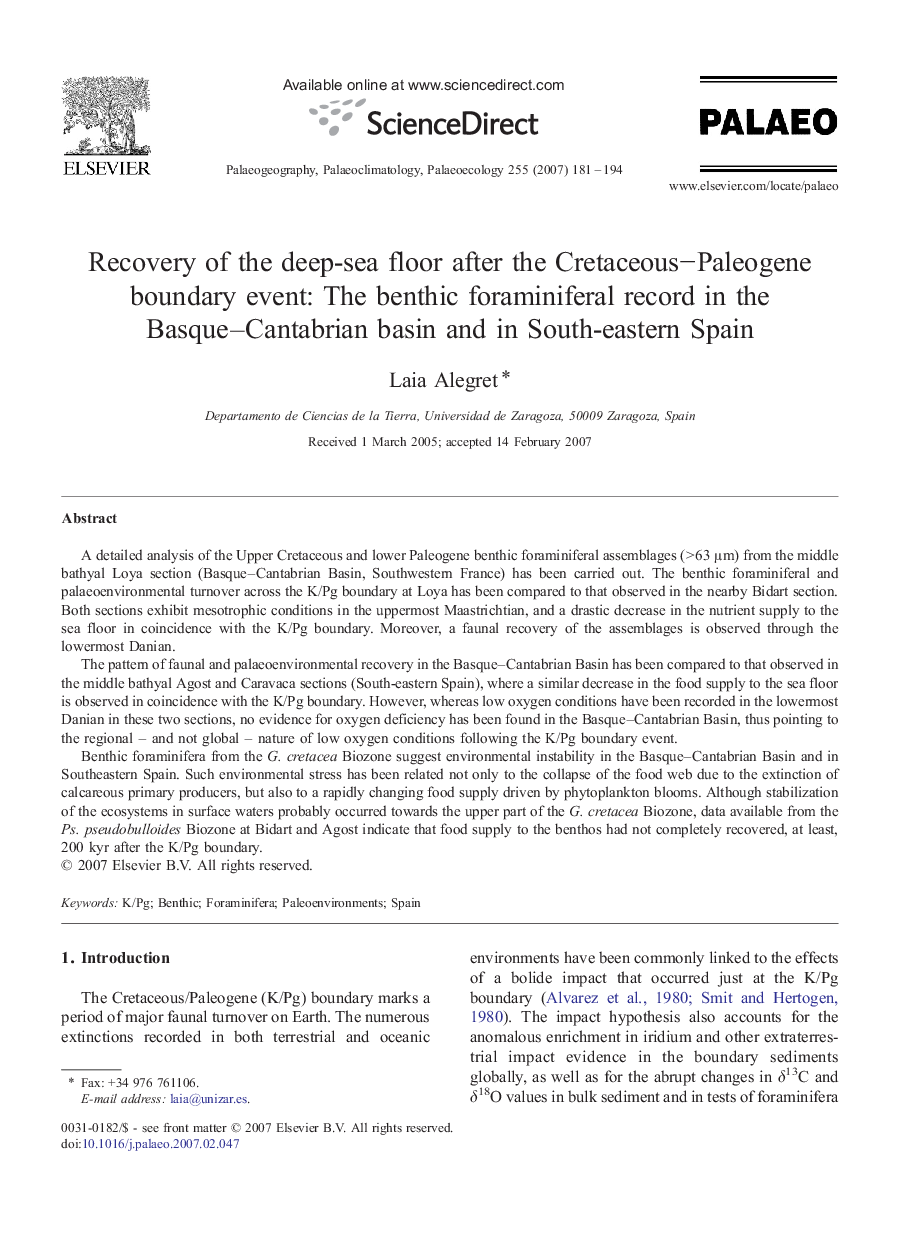| کد مقاله | کد نشریه | سال انتشار | مقاله انگلیسی | نسخه تمام متن |
|---|---|---|---|---|
| 4468685 | 1622341 | 2007 | 14 صفحه PDF | دانلود رایگان |

A detailed analysis of the Upper Cretaceous and lower Paleogene benthic foraminiferal assemblages (> 63 μm) from the middle bathyal Loya section (Basque–Cantabrian Basin, Southwestern France) has been carried out. The benthic foraminiferal and palaeoenvironmental turnover across the K/Pg boundary at Loya has been compared to that observed in the nearby Bidart section. Both sections exhibit mesotrophic conditions in the uppermost Maastrichtian, and a drastic decrease in the nutrient supply to the sea floor in coincidence with the K/Pg boundary. Moreover, a faunal recovery of the assemblages is observed through the lowermost Danian.The pattern of faunal and palaeoenvironmental recovery in the Basque–Cantabrian Basin has been compared to that observed in the middle bathyal Agost and Caravaca sections (South-eastern Spain), where a similar decrease in the food supply to the sea floor is observed in coincidence with the K/Pg boundary. However, whereas low oxygen conditions have been recorded in the lowermost Danian in these two sections, no evidence for oxygen deficiency has been found in the Basque–Cantabrian Basin, thus pointing to the regional – and not global – nature of low oxygen conditions following the K/Pg boundary event.Benthic foraminifera from the G. cretacea Biozone suggest environmental instability in the Basque–Cantabrian Basin and in Southeastern Spain. Such environmental stress has been related not only to the collapse of the food web due to the extinction of calcareous primary producers, but also to a rapidly changing food supply driven by phytoplankton blooms. Although stabilization of the ecosystems in surface waters probably occurred towards the upper part of the G. cretacea Biozone, data available from the Ps. pseudobulloides Biozone at Bidart and Agost indicate that food supply to the benthos had not completely recovered, at least, 200 kyr after the K/Pg boundary.
Journal: Palaeogeography, Palaeoclimatology, Palaeoecology - Volume 255, Issues 1–2, 2 November 2007, Pages 181–194